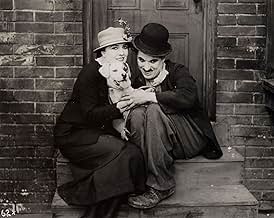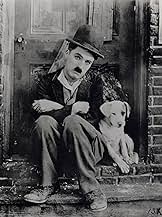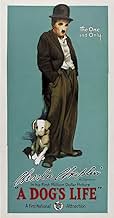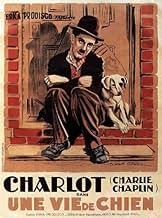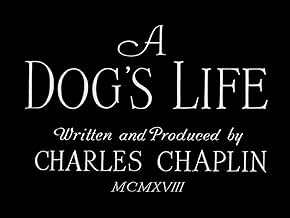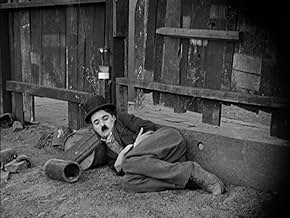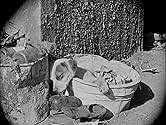The Little Tramp and his dog companion struggle to survive in the inner city.The Little Tramp and his dog companion struggle to survive in the inner city.The Little Tramp and his dog companion struggle to survive in the inner city.
Edna Purviance
- Bar Singer
- (uncredited)
Dave Anderson
- Bartender
- (uncredited)
Bert Appling
- Unemployed Man
- (uncredited)
Albert Austin
- Crook
- (uncredited)
Henry Bergman
- Fat Unemployed Man
- (uncredited)
- …
Alva D. Blake
- Man in Dance Hall
- (uncredited)
Mel Brown
- Employment Agency Clerk
- (uncredited)
- …
Minnie Chaplin
- Dance-Hall Dramatic Lady
- (uncredited)
Syd Chaplin
- Lunchwagon Owner
- (uncredited)
Dorothy Cleveland
- Woman in Dance Hall
- (uncredited)
Slim Cole
- Unemployed Man
- (uncredited)
Margaret Cullington
- Woman in Dance Hall
- (uncredited)
Billy Dill
- Man in Dance Hall
- (uncredited)
Margaret Dracup
- Woman in Dance Hall
- (uncredited)
Jack Duffy
- Man in Dance Hall
- (uncredited)
Robert Dunbar
- Old Man in Dance Hall
- (uncredited)
Ella Eckhardt
- Woman in Dance Hall
- (uncredited)
- Director
- Writer
- All cast & crew
- Production, box office & more at IMDbPro
Featured reviews
Let's face it : Chaplin's short films, before 1917, are not so good and funny anymore. After 1917, and waiting to make longer films, there are three films I'm really found of : The Imigrant, Shoulder Arms and A Dog's Life. I love A Dog's Life because Chaplin was never trampier than in this film. He's poor, miserable, probably dirty! He really looks like a real tramp! So is his dog! The dog is simply wonderful in this film!
Funny gags all the way. I'm mad about a scene in the café, when Edna Purviance sings a very sad song and makes everybody's crying. In my version, on video, they put some strange music while she sings, like a saw sound. It's a very funny sounds effect for the image of miss Purviance! The story is very sample and warm. This is Chaplin's shorts at his best!
Funny gags all the way. I'm mad about a scene in the café, when Edna Purviance sings a very sad song and makes everybody's crying. In my version, on video, they put some strange music while she sings, like a saw sound. It's a very funny sounds effect for the image of miss Purviance! The story is very sample and warm. This is Chaplin's shorts at his best!
This is an entertaining comedy with a couple of particularly amusing scenes. Chaplin is joined by several of his regular supporting players like Edna Purviance and Henry Bergman, plus Syd Chaplin, and the cast works together well. The story is funny, yet not without some substance either.
As his usual 'tramp' character, Charlie is already living "A Dog's Life" when he befriends a stray dog, and they share some adventures together. Chaplin hits a good balance in keeping himself and the dog sympathetic without overdoing the sentiment. There are some slow stretches that keep it from being even better, but the good parts make up for them and make this definitely worth watching. One particular highlight is a scene where Charlie tries to outwit two thieves - it's very cleverly done and very funny.
Anyone who likes Chaplin's comedies should enjoy this one. It has good comedy, a talented and familiar cast, and some worthwhile material - just about everything you would expect in one of Chaplin's features.
As his usual 'tramp' character, Charlie is already living "A Dog's Life" when he befriends a stray dog, and they share some adventures together. Chaplin hits a good balance in keeping himself and the dog sympathetic without overdoing the sentiment. There are some slow stretches that keep it from being even better, but the good parts make up for them and make this definitely worth watching. One particular highlight is a scene where Charlie tries to outwit two thieves - it's very cleverly done and very funny.
Anyone who likes Chaplin's comedies should enjoy this one. It has good comedy, a talented and familiar cast, and some worthwhile material - just about everything you would expect in one of Chaplin's features.
Of Charlie Chaplin's many works, "A Dog's Life" is in my top 5, under "The Kid", "City Lights" and "Modern Times". Though just a short, I think this film is one of Chaplin's funniest and most poignant of them all. It had me laughing the whole time and this is the film that made me fall in love with his hands: It was the miming scene where the Tramp has to pretend to be the bully he's just knocked out, to get the wallet back, simply by using hand gestures! It's a moment that shines for all silent movies, showing how little sound is needed to communicate - it's a favorite scene of mine. This is a great film, and especially when coupled with "The Kid" (Chaplin's best work, I think, and my favorite film of all time) how could *anyone* refuse?
This was Charlie Chaplin's first film for First National, and with his pictures there, he could create movies of longer, or varied, length, rather than the two-reelers he was obliged to churn out before. His Mutual shorts were a vast improvement over his previous work, but watching them I'd sometimes get the sense that his ideas required more time to elaborate, to fully realize, or unfold. The hilarity of the gags in "A Dog's Life" result from this newly acquired freedom to expand his films.
I don't think it's one of Chaplin's most important works, or one of his best, but "A Dog's Life" is very funny and left me in high spirits. The crying set piece was hilarious. As well, Chaplin continued to use props and settings to his comedic advantage, such as with the missing boards and the door of his fenced home when he eludes a policeman in the beginning of the film.
Perhaps, the most interesting aspect of this one is the elaborate pantomime that goes on. The creation of the world within a silent film often created problems for lesser filmmakers on what the role of sound is within that world. There is obviously sound in the world of "A Dog's Life", but the tramp continually ignores it and oft prefers to use pantomime to express himself--or others, as in the elaborate scene using his hands. This demonstrated a lot of thought on Chaplin's part, and it's something that could be done only in the silent era. For all the comic genius in America at the time, the fact that the clowns couldn't talk shouldn't be overlooked, for it was full of advantages.
I don't think it's one of Chaplin's most important works, or one of his best, but "A Dog's Life" is very funny and left me in high spirits. The crying set piece was hilarious. As well, Chaplin continued to use props and settings to his comedic advantage, such as with the missing boards and the door of his fenced home when he eludes a policeman in the beginning of the film.
Perhaps, the most interesting aspect of this one is the elaborate pantomime that goes on. The creation of the world within a silent film often created problems for lesser filmmakers on what the role of sound is within that world. There is obviously sound in the world of "A Dog's Life", but the tramp continually ignores it and oft prefers to use pantomime to express himself--or others, as in the elaborate scene using his hands. This demonstrated a lot of thought on Chaplin's part, and it's something that could be done only in the silent era. For all the comic genius in America at the time, the fact that the clowns couldn't talk shouldn't be overlooked, for it was full of advantages.
By the time he made `A Dog's Life', Charlie Chaplin was already a master of cinematic comic timing. Editing techniques had not developed to the point at which they would be much help to Chaplin's physical comedy gags, so laughs required expertly handled choreography. Chaplin must have rehearsed countless takes to get each scene just right. The incredible opening sequence, seemingly shot all in one take, is particularly amazing. Chaplin and his fellow actors synchronize their movements perfectly so that, no matter what action they undertake, they always arrive on opposite sides of the fence at the exact same moment. Additionally, they make each movement at a natural pace so that, rehearsed though they may be, their motions always seem spontaneous and believable. You never get the sense that Chaplin or the policemen are speeding up or slowing down.
Rating: 6.5
Rating: 6.5
Did you know
- TriviaThis was Charles Chaplin's first film for First National Pictures under a $1M contract where Chaplin had full creative control over his films for the first time.
- GoofsDuring the fight at the lunch cart, one of the props holding up the awning gets knocked away. In subsequent shots, the prop is back in place.
- Quotes
Title Card: When dreams come true.
- ConnectionsEdited into The Chaplin Revue (1959)
Details
- Release date
- Country of origin
- Official sites
- Languages
- Also known as
- A Dog's Life
- Filming locations
- Production company
- See more company credits at IMDbPro
- Runtime
- 33m
- Color
- Sound mix
- Aspect ratio
- 1.33 : 1
Contribute to this page
Suggest an edit or add missing content

